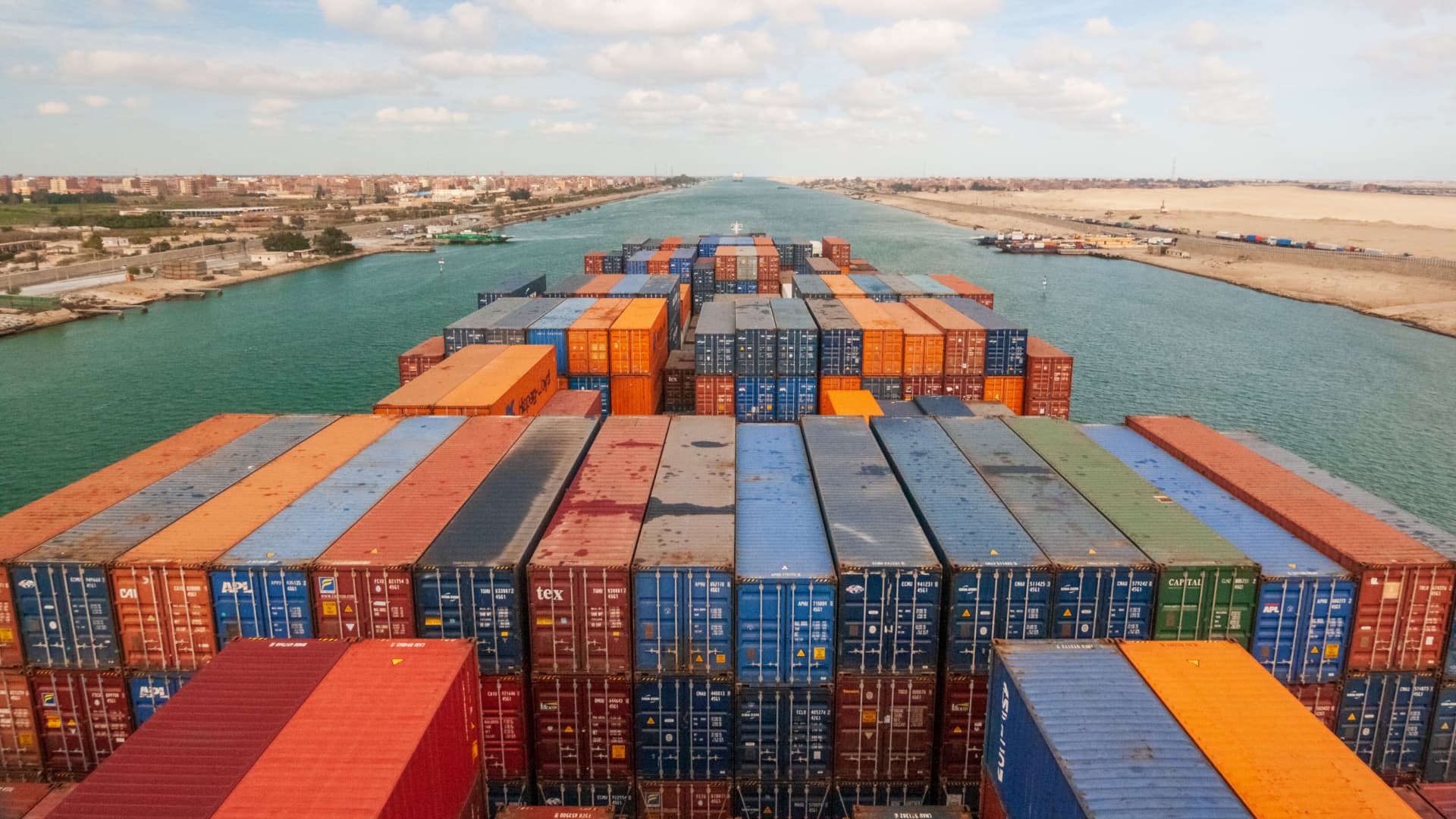The shipping container is a logistics marvel that can affordably move thousands of items from hundreds of different companies all around the globe.
If there is a slowdown in shipping-container circulation, there could be massive supply chain bottlenecks.
“The skill involved in containerization is moving that container from point A to point B and getting it back to point A as quickly and efficiently as you possibly can,” Simon Heaney, senior manager of container research at Drewry, a maritime research and consulting firm, told CNBC.
Supply chain disruptions
Disruptions to global trade can have major impacts on shortages and inflation, causing serious ramifications for American households and businesses.
For example, the Federal Reserve Bank of San Francisco found that supply chain disruptions “contributed on average about 60% of the run-up of U.S. inflation” in the two years following the coronavirus pandemic outbreak.
“People suddenly realized how important that container is to everybody’s standard of living,” John Fossey, senior analyst of container equipment at Drewry, told CNBC.
Indeed, inflation cooled alongside the bounce back of the supply chain, according to a White House analysis of the U.S. economy. The study showed more than 80% of recent progress in lowering inflation can be attributed to the supply chain.
Attacks by Iran-backed Houthi militants on ships traveling through the Red Sea have also led ocean carriers to take longer voyages around the Cape of Good Hope.
“Taking the long way [around] the bottom of Africa, that’s adding about one-third to their voyage distance,” John McCown, nonresident senior fellow at the Center for Maritime Strategy, told CNBC.
Longer voyages result in higher fuel costs for ocean carriers and late arrivals of shipments to their planned destinations, contributing to delays in returning containers to nations like China to be reloaded with exports.
China is a world leader in exports and manufacturing, and accounts for more than 95% of shipping-container production, according to the Federal Maritime Commission.
“Particularly with the Asian countries, [they] long ago recognized that a very key part of [their] economy is exports, and if [they] want to be efficient at exporting products, [they] need to make sure there is a good conveyance system,” McCown said.
Attacks on ships in the Red Sea are the latest shock to the global supply chain after Russia’s invasion of Ukraine and the coronavirus pandemic shook up the logistics industry — including shipping container availability.
“During the pandemic, we had the phenomenon that there were not enough containers because many containers were stuck in rail yards or they were stuck in container ports,” Goetz Alebrand, head of ocean freight for the Americas with DHL Global Forwarding, told CNBC. “There was not the fluidity that we usually had.”
When shipping-container prices skyrocketed in 2020 and 2021, it became more lucrative for shipping companies and leasing firms to send containers back to Asia as fast as possible.
“Because of the need to replenish and reposition containers back to Asia,” Heaney said, “that container will make another sea journey back, but completely empty.”
That trend resulted in a trade imbalance that hit U.S. exports, including agricultural products. In response, some farms dumped milk in fields and plowed crops back into the soil.
“Ideally, you would have the most efficient system,” Heaney said. “The only way to make that happen is to have a completely balanced manufacturing ecosystem, and we don’t have that and we’re unlikely to have that. [It’s] an inefficiency born not of container shipping but just of the nature of the global economy.”
Watch the video above to learn more about how shipping containers enable global trade, why China dominates the shipping industry and what happens after a container shortage.

